
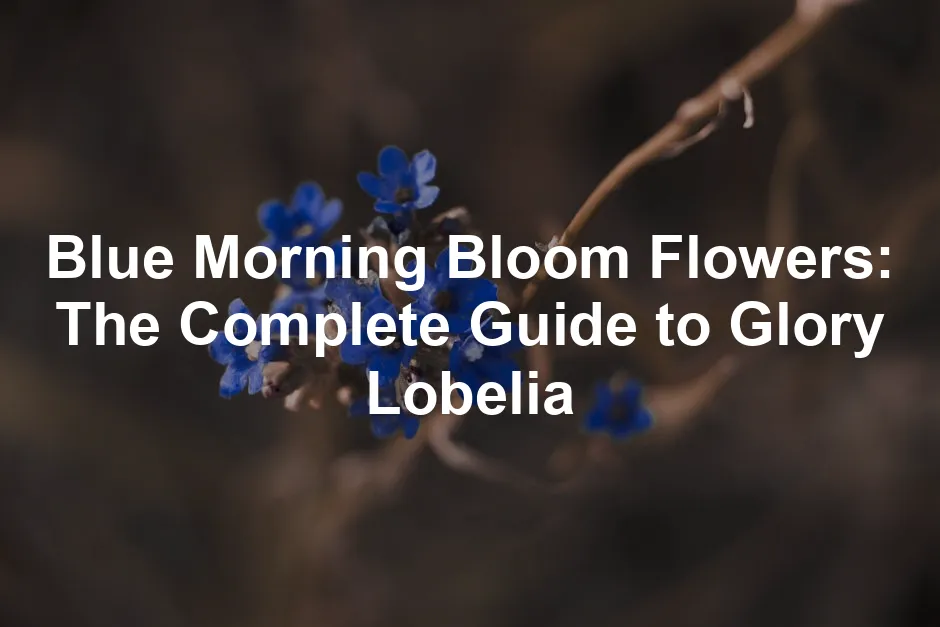
Blue Morning Bloom Flowers: The Complete Guide to Glory Lobelia
Introduction
Blue flowers add charm and tranquility to gardens. They create stunning visuals and attract various pollinators. Glory Lobelia stands out with its vibrant blue blooms. This perennial is perfect for colorful landscapes and also invites hummingbirds and butterflies, enhancing your garden’s beauty.

The allure of blue flowers like Glory Lobelia can transform your garden. Explore more about the beauty of blue flowers.
Summary and Overview
Glory Lobelia, scientifically known as Lobelia siphilitica, is a native wildflower. It thrives in moist environments, often found along streams and wetlands. Blooms typically appear from July to September, showcasing striking blue to violet colors. This perennial not only enhances aesthetic appeal but also serves as a crucial nectar source for pollinators.
Caring for Glory Lobelia is relatively simple. It prefers rich, well-draining soil and consistent moisture. The plant can adapt to various garden settings, from borders to water gardens. Its versatile nature makes it a fantastic addition to any landscape, ensuring it thrives alongside other plants while providing visual interest and ecological benefits.

To keep your plants happy and healthy, consider using organic fertilizer. It provides essential nutrients without the harmful chemicals, making it a great choice for both your plants and the environment.
Characteristics and Appearance
Glory Lobelia, or Lobelia siphilitica, showcases stunning blue flowers that bloom from July to September. Each flower features a unique two-lipped structure, with five lobes that curve back, creating a delicate appearance. These blossoms can range from light blue to deep violet shades, captivating anyone who sees them.
The plant grows upright, reaching a height of 1 to 4 feet, making it a striking addition to any garden. Its foliage consists of alternate, lance-like leaves measuring 2 to 6 inches long. The leaves are often toothed and provide a lush green backdrop to the vivid flowers.
Glory Lobelia typically spreads about 12 to 18 inches wide, forming a compact clump. This growth habit allows it to create a beautiful display when planted in groups or amidst other perennials. Its ability to attract hummingbirds and butterflies only adds to its charm, making it a favorite among gardeners looking to enhance pollinator-friendly spaces.

Growing Glory Lobelia
Ideal Growing Conditions
Glory Lobelia thrives in conditions that mimic its native habitats, which include wet meadows and stream banks. It prefers full sun to partial shade, receiving at least four to six hours of sunlight daily. In warmer climates, some afternoon shade can help prevent wilting.
For soil, Glory Lobelia favors rich, well-draining types with a slightly acidic pH between 6.0 and 7.0. Sandy loam or clay are ideal, but avoid overly wet or waterlogged conditions to prevent root rot. Mulching with compost can improve soil quality and moisture retention. You might want to grab some mulch to keep those roots cozy!
Moisture levels are critical for Glory Lobelia. It requires consistent moisture, thriving in damp environments. While it can tolerate occasional dry spells, prolonged drought can stress the plant, leading to stunted growth and fewer blooms. Regular watering, especially during hot spells, will help maintain its vibrant display.
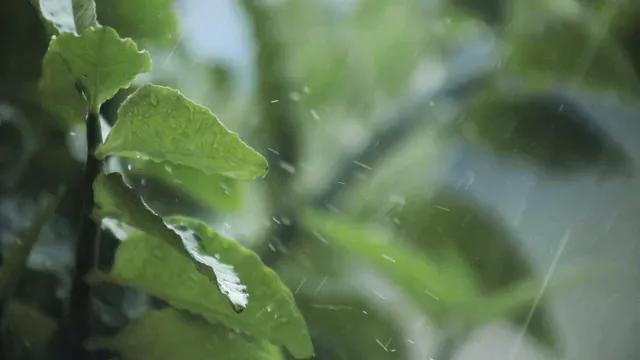
Planting Glory Lobelia
To successfully plant Glory Lobelia, choose the best time, ideally in early spring or fall. Start by selecting a location that meets its sunlight and moisture requirements.
Prepare the soil by loosening it and mixing in compost for added nutrients. If starting from seeds, sow them in trays about 6 to 8 weeks before the last frost date. Lightly press the seeds into the soil and keep them moist.
When transplanting seedlings outdoors, space them 12 to 18 inches apart to allow for their mature spread. If transplanting mature plants, dig a hole slightly larger than the root ball and place the plant at the same soil level it was previously growing.
Water the newly planted lobelias thoroughly to help them settle in. For those planting in containers, use a high-quality potting mix and ensure adequate drainage. With proper care, your Glory Lobelia will flourish, bringing stunning blue blooms to your garden.
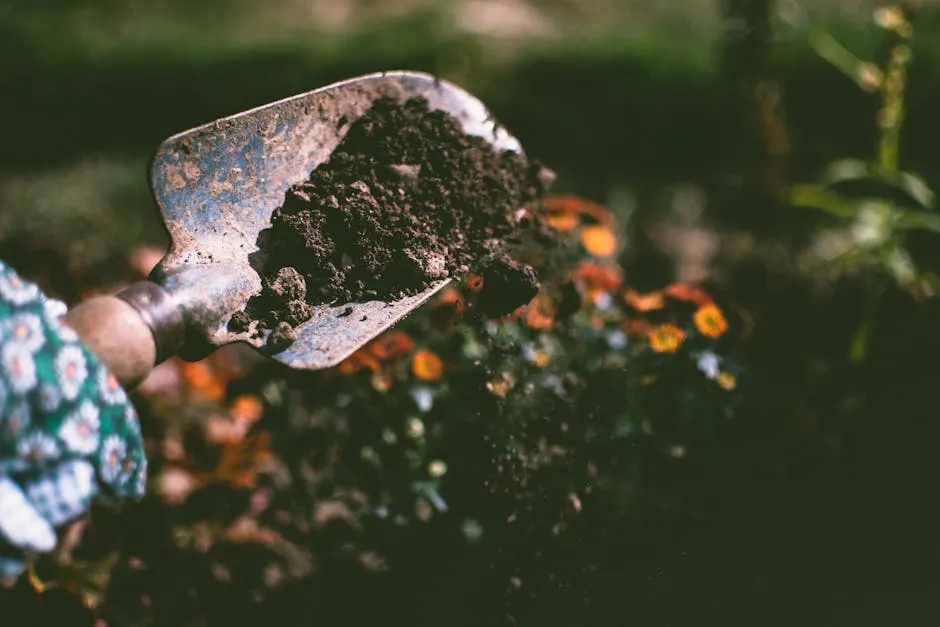
Care and Maintenance
To keep your Glory Lobelia thriving, follow these simple care practices.
Watering: Glory Lobelia loves moisture. Water regularly, ensuring the soil remains consistently damp but not soggy. During hot spells, increase the frequency to prevent wilting. A deep watering once a week should suffice, but check the soil’s moisture levels often. A handy soil moisture meter can help you keep an eye on those moisture levels!
Fertilization: This plant benefits from a balanced fertilizer. Apply a slow-release granule at planting time. In mid-summer, use a liquid fertilizer every four to six weeks to boost growth. This will encourage more blooms and vibrant foliage.
Pruning and Deadheading: Keep your Glory Lobelia looking its best by removing spent flowers. Deadheading encourages new blooms and prevents the plant from expending energy on seed production. Prune back any leggy growth in late summer to maintain shape and promote bushier growth.
By following these tips, you’ll enjoy a healthy, blooming Glory Lobelia all season long.

Attracting Wildlife
Pollinators and Other Beneficial Insects
Glory Lobelia is a fantastic addition to any garden if you’re looking to attract pollinators. Its vibrant blue flowers are particularly appealing to bees, hummingbirds, and butterflies. These creatures play a vital role in our ecosystems, helping plants reproduce and ensuring biodiversity.
To create a pollinator-friendly garden, consider grouping Glory Lobelia with other flowering plants. This will provide a continuous food source. Additionally, avoid using pesticides that can harm beneficial insects. By fostering a welcoming environment, you’ll enjoy a lively garden buzzing with activity. Why not add a butterfly feeder to your garden? It will attract even more of those beautiful creatures!
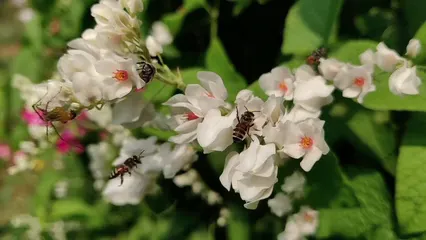
Companion Planting
Companion planting enhances the beauty and health of your garden. Glory Lobelia pairs well with several plants. Consider combining it with plants like Black Eyed Susans or Asters. These companions thrive in similar conditions and create a stunning visual contrast. For more on how to maximize your garden’s yield, check out companion planting strategies for increased yield.
Benefits of companion planting include improved growth and pest control. The diverse plant life can attract beneficial insects while deterring pests. This synergy not only enhances your garden’s aesthetic appeal but also promotes a healthier ecosystem. For a vibrant display, mix and match these plants for eye-catching combinations.
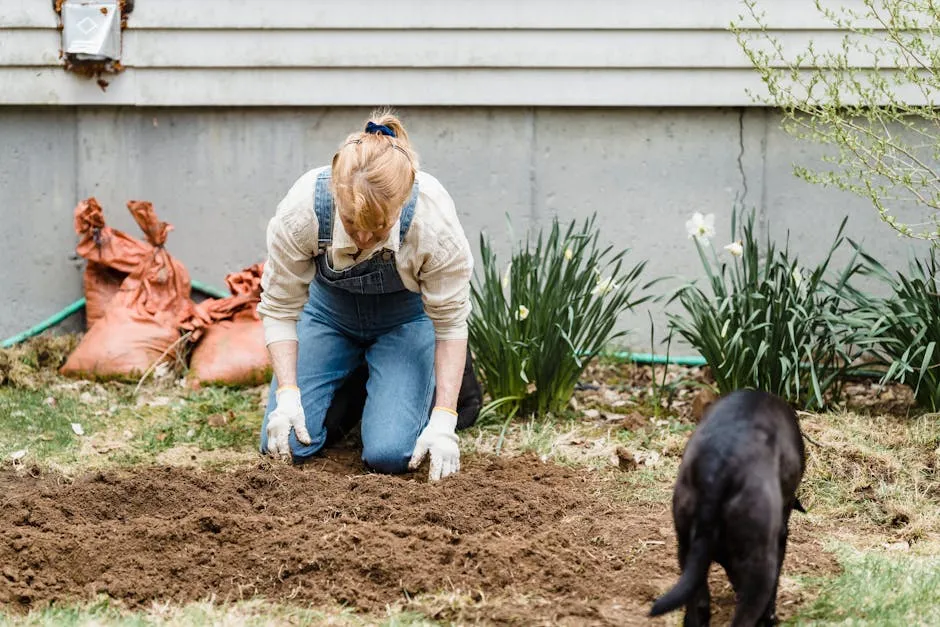
Common Problems and Solutions
Pests and Diseases
Glory Lobelia can face a few pest and disease challenges. Common pests include aphids and spider mites. You might notice yellowing leaves or distorted growth as signs of infestation. Fungal diseases, like root rot, can occur if the soil remains too wet. To prevent these issues, ensure proper drainage and avoid overwatering. Regularly inspect your plants for pests. If you spot any, treat them with insecticidal soap or a strong water spray. Maintaining healthy plants is crucial. Fertilizing and proper watering can enhance their resilience against pests and diseases.

Troubleshooting Growth Issues
Sometimes, Glory Lobelia struggles with blooming or wilting. Poor blooming could stem from insufficient sunlight or nutrient deficiencies. Ensure your plants receive at least six hours of sunlight daily. Wilting often indicates underwatering or extreme heat. Check the soil moisture regularly. If the soil feels dry, water thoroughly. Additionally, soil quality matters. Use well-draining, nutrient-rich soil for optimal growth. If conditions are right, you’ll enjoy a vibrant display of blue flowers all season long. Regular care and monitoring will help your Glory Lobelia thrive beautifully in your garden.
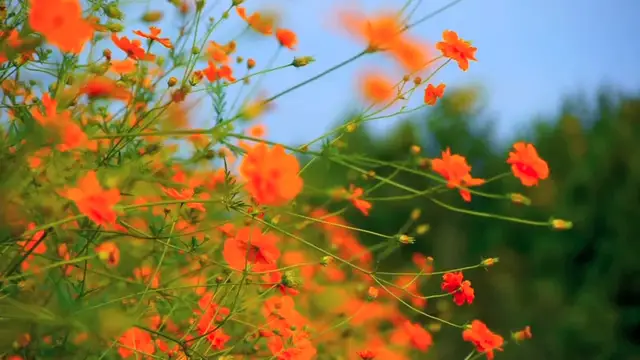
Conclusion
Glory Lobelia brings stunning beauty and ecological benefits to your garden. Its vibrant blue flowers not only enhance your landscape but also attract crucial pollinators. By addressing common problems and maintaining proper care, you can enjoy this delightful perennial for years to come. Consider adding Glory Lobelia to your garden; it’s a fantastic choice for both aesthetics and biodiversity. Remember, nurturing native plants like this one is vital for a healthy ecosystem. Start your journey with Glory Lobelia today!
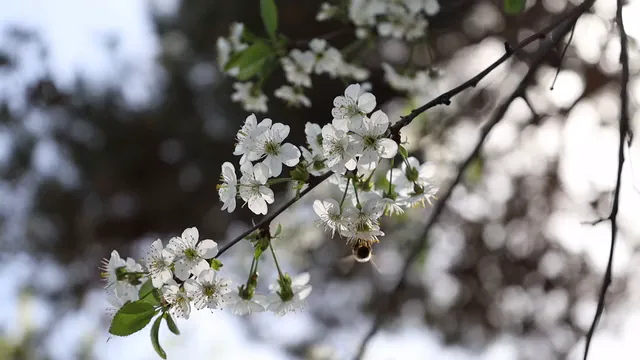
FAQs
What is the best way to propagate Glory Lobelia?
Glory Lobelia can be propagated easily through seeds and division. If you choose seeds, start them indoors 6-8 weeks before the last frost. Lightly cover the seeds with soil and keep them moist. Once seedlings develop, transplant them outdoors after the danger of frost has passed. For division, wait until spring or fall. Carefully dig up the plant and separate the clumps. Replant the sections in well-prepared soil to ensure they take root.
How often should I water Glory Lobelia?
Water Glory Lobelia regularly to maintain consistently moist soil. During hot, dry spells, check the soil daily. If the top inch feels dry, it’s time to water. Aim for deep watering once a week, but adjust based on rainfall and temperature. Remember, while it enjoys moisture, standing water can lead to root rot, so ensure proper drainage.
Is Glory Lobelia deer-resistant?
Yes, Glory Lobelia is generally deer-resistant. Its slightly toxic nature makes it less appealing to deer and other wildlife. However, hungry deer may eat it if food sources are limited. Planting it alongside other deer-resistant plants can further deter these animals from your garden.
Can Glory Lobelia thrive in containers?
Absolutely! Glory Lobelia does well in containers, making it a great choice for patios or small gardens. Choose a pot with good drainage and use high-quality potting soil. Regular watering is essential; containers can dry out quickly. Position them where they’ll receive partial sun to full shade for optimal growth.
What are the ideal companion plants for Glory Lobelia?
Glory Lobelia pairs beautifully with several companion plants. Consider Black Eyed Susans, Asters, or Coneflowers. These plants thrive in similar conditions and create stunning visual contrasts. Additionally, they attract pollinators, enhancing your garden’s biodiversity while providing a lovely, cohesive look.
Please let us know what you think about our content by leaving a comment down below!
Thank you for reading till here 🙂
All images from Pexels



